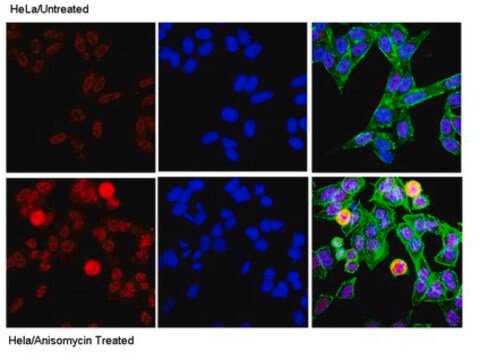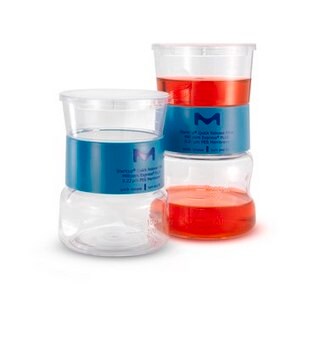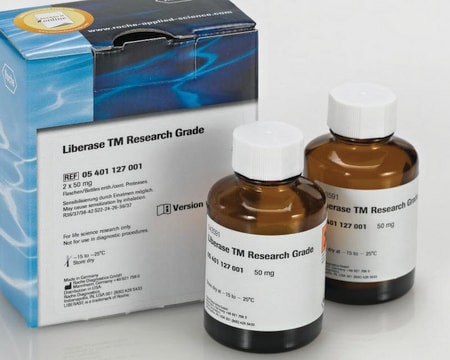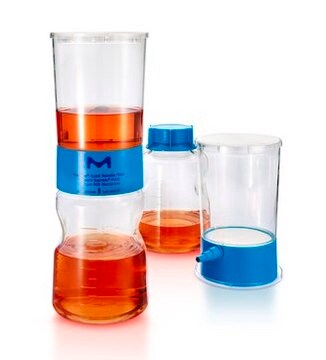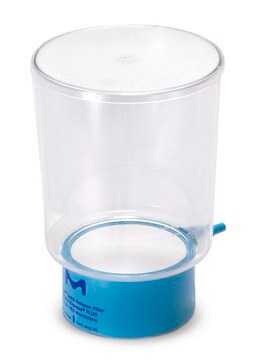ABE24
Anti-BPTF Antibody
from rabbit, purified by affinity chromatography
Synonyme(s) :
Protein Bptf, Bromodomain PHD-finger Transcription Factor
About This Item
Produits recommandés
Source biologique
rabbit
Niveau de qualité
Forme d'anticorps
affinity isolated antibody
Type de produit anticorps
primary antibodies
Clone
polyclonal
Produit purifié par
affinity chromatography
Espèces réactives
mouse, human
Technique(s)
immunoprecipitation (IP): suitable
western blot: suitable
Numéro d'accès NCBI
Conditions d'expédition
wet ice
Modification post-traductionnelle de la cible
unmodified
Informations sur le gène
human ... BPTF(2186)
mouse ... Bptf(207165)
Description générale
Spécificité
Immunogène
Application
Epigenetics & Nuclear Function
Transcription Factors
Western Blotting Analysis: 0.2 µg/mL from a representative lot detected BPTF in 50 µg of wild-type, but not Bptf-knockout, mouse embryonic fibroblast (MEF) lysate (Courtesy of Joseph Landry, Ph.D, Virginia Commonwealth University School of Medicine, U.S.A.).
Immunoprecipitation Analysis: A representative lot co-immunoprecipitated Ctcf and SA2 with BPTF from mouse embryonic stem cell (mESC) extract (Qiu, Z., et al. (2015). Mol. Cell. Biol. 35(1):224-237).
Western Blotting Analysis: A representative lot detected BPTF in Ctcf and SA2 immunoprecipitates from mouse embryonic stem cell (mESC) extract (Qiu, Z., et al. (2015). Mol. Cell. Biol. 35(1):224-237).
Western Blotting Analysis: A representative lot detected BPTF in ESC, MEF, and CD8+/CD4+ double-positive (DP) thymocytes from wild-type, but not Bptf-knockout, mice (Qiu, Z., et al. (2015). Mol. Cell. Biol. 35(1):224-237).
Note: ABE24 is not recommended for Chromatin Immunoprecipitation (ChIP). For ChIP application, please use ABE1966.
Qualité
Western Blot Analysis: 0.05 µg/mL of this antibody detected BPTF in 10 µg of NIH/3T3 cell lysate.
Description de la cible
Forme physique
Stockage et stabilité
Remarque sur l'analyse
NIH/3T3 cell lysate
Autres remarques
Clause de non-responsabilité
Vous ne trouvez pas le bon produit ?
Essayez notre Outil de sélection de produits.
Code de la classe de stockage
12 - Non Combustible Liquids
Classe de danger pour l'eau (WGK)
WGK 1
Point d'éclair (°F)
Not applicable
Point d'éclair (°C)
Not applicable
Certificats d'analyse (COA)
Recherchez un Certificats d'analyse (COA) en saisissant le numéro de lot du produit. Les numéros de lot figurent sur l'étiquette du produit après les mots "Lot" ou "Batch".
Déjà en possession de ce produit ?
Retrouvez la documentation relative aux produits que vous avez récemment achetés dans la Bibliothèque de documents.
Notre équipe de scientifiques dispose d'une expérience dans tous les secteurs de la recherche, notamment en sciences de la vie, science des matériaux, synthèse chimique, chromatographie, analyse et dans de nombreux autres domaines..
Contacter notre Service technique
